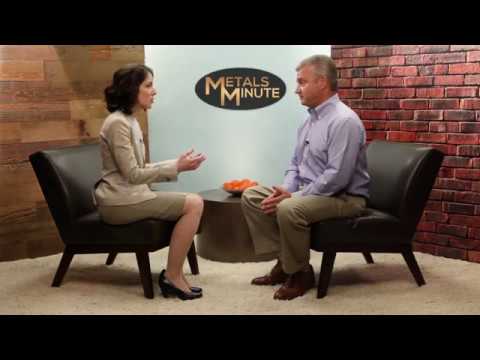The Ultimate Guide to Precious
Metals IRAs
What is a Precious Metals IRA?
Precious metals IRA is an Individual Retirement Account in which physical gold or other approved precious metals are held in custody for the benefit of the IRA account owner.
Learn more about:
How does a precious metals IRA work?
A precious metals IRA works much like any other IRA, the difference being the investor owns actual stored gold, silver, platinum, and palladium as opposed to stocks, bonds, or funds. The primary difference is that a precious metals IRA is administered by a company that specializes in what are known as self directed IRA accounts.
Why Choose a Precious Metals IRA?
A precious metals IRA allows for tax advantaged investing in physical precious metals using retirement savings. Precious metals are a key component in a balanced and diversified investment portfolio, and a precious metals IRA is an ideal way for investors to establish a position in this important asset.
Which precious metals are allowed in IRAs?
Gold, silver, platinum and palladium, provided they are in the form of IRS-approved coin or bar products.
Is it difficult to open and maintain precious metals in an IRA?
It is much easier than you might think! Administrative specialists are available to guide you through the process.
Can I own the PMC Ounce, Gold Vault Account, and Silver Vault Account in a Self-Directed Precious Metals IRA?
Yes, these investment products contain IRA approved bullion. Additionally, the price per ounce is generally much lower than the premiums associated with bullion coins.
Where are the metals in a precious metals IRA stored?
Investors’ precious metals holdings are stored in a US based non-bank depository. All holdings are fully insured.
What is the difference between a physical precious metals IRA vs ETF?
Precious Metals IRAs are another avenue investors use to buy physical precious metals, including gold, silver, platinum, and palladium. A gold or silver ETF is a type of exchange traded product (ETP) that's traded on the stock exchange. Precious metals IRAs which own the physical bullion do not have the counterparty risk associated with ETP’s and funds.

What is the Difference Between a Self-Directed IRA and a Traditional IRA?
A self-directed IRA is a type of traditional or Roth IRA, which means it allows you to save for retirement on a tax-advantaged basis and has the same IRA contribution limits. The difference between self-directed and other IRAs is solely the types of assets you can own in the account.
What Types of Metal Can I Hold in My Self-Directed IRA?
IRS approved bullion coins and bars.
Can I convert some or all of an existing IRA into a self directed precious metals IRA?
Yes. Many clients often rebalance their portfolios by converting at least some portion of an IRA into precious metals via a self directed IRA.
Can I hold precious metals in my Roth IRA?
Yes. Precious metals can be owned in both Traditional and Roth IRA forms via self directed accounts. In addition, investors’ old 401k’s can be rolled into self directed IRA accounts as well.
How can I move money from my current retirement account into a Precious Metals IRA?
Contact Neptune Global and we will assist you in establishing a self directed IRA.
How long does it take to transfer or rollover to a precious metals IRA?
Transferring your funds to your new Precious Metals IRA can take as little as 3 business days.
Who can I speak with at Neptune-GBX if I have questions about precious metals IRA investing?

Neptune Global Holdings LLC
Wilmington, DE USA
© Neptune Global Holdings LLC. All Rights Reserved.
Member Depository Trust & Clearing Corporation (DTCC) AIP
Any and all information in this website (including content posts, comments, and opinions) is for informational purposes only and are not intended as recommendations to buy or sell any type of investment products. Neptune Global Holdings LLC and its related companies neither act as investment advisors nor provides investment advisory services. See our Terms of Service for more details.